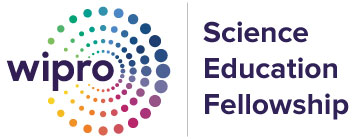The release of the Framework for K-12 Science Education and the derivative Next Generation Science Standards (NGSS) provided a new vision of science learning. Curriculum should reflect the three dimensions of disciplinary core ideas, science & engineering practices (SEP) and cross cutting concepts. Disciplinary core ideas have always been at the heart of state and national standards. The science and engineering practices and cross cutting concepts are new additions that recognize and codify that the teaching and learning of science in the 21st century is more than learning a collection of facts. The HCCLS process puts the science and engineering practices center stage.
The Horizontal Collaborative Coaching and Learning in Science (HCCLS) model is similar to the VCCLS in that teams of teachers select a content focus and a COS, but the teams are now organized by grade span. The content focus is centered on one Next Generation Science Standard Science or Engineering practice that the team will “dive deeply” into to learn about the practice and how to successfully bring it to their students. For example, a high school HCCLS may dive deeply into “Planning and Carrying out Investigations”-Practice #3, each in their own content specialty, while focusing on a COS about “Using Scaffolding and Backward Design to help Students Plan Experiments.” On the other hand, an elementary HCCLS focusing on NGSS practice #7: Engaging in Argument from Evidence, may chose a COS to learn classroom strategies that foster argumentation skills and help students understand what evidence is and isn’t at the elementary level.
HCCLS teams consist of 4 to 6 SEF Fellows who are within the same grade span. Teams meet approximately twice per month in the second half of the first year of the program, usually February through June. One meeting will occur during the regularly scheduled SEF meetings and the other times will be determined by the team. And as with VCCLS groups, HCCLS groups will need to use time outside of SEF meeting time to discuss the chosen research paper, video lessons, view observation-videos, debrief the observation videos, look at student work, and prepare for a presentation. Groups will present findings and learnings from their COS at the June SEF Teacher Leadership Conference.
Team grade span
SEP
Title of Research Article
Research article citation
K-2
Integrated STEM: Planning and carrying out investigations
The Effects of a STEM Intervention on Elementary Students’ Science Knowledge and Skills
Cotabish, A., Dailey, D., Robinson, A., & Hughes, G. (2013). The effects of STEM intervention on elementary students’ science knowledge and skills. School Science and Mathematics, 113(5), 215-226. 10.1111/ssm.12023
3-5
Planning and carrying out investigations
Inquiry-based science education: towards a pedagogical framework for primary school teachers.
van Uum, M.S.J., Verhoeff, R.P. & Peeters, M. (2016). Inquiry-based science education: towards a pedagogical framework for primary school teachers. International Journal of Science Education, 38(3), 450-469. 10.1080/09500693.2016.1147660
6-8
Constructing Explanations
Supporting Students’ Construction of Scientific Explanations by Fading Scaffolds in Instructional Materials
Mcneill, K.L., Lizotte, D.J., Krajcik, J., & Marx, R.W. (200). Supporting students’ construction of scientific explanations by fading scaffolds in instructional materials. Journal of the Learning Sciences, 15(2), 153-191. 10.1207/s15327809jls1502_1
9-12
Analyzing and Interpreting data
Measuring graph comprehension, critique, and construction in science.
Lai, K., Cabrera, J., Vitale, J.M., Madhok, J., Tinker, R., & Linn, M.C. (2016). Measuring graph comprehension, critique, and construction in science. Journal of Science Education & Technology, 25, 665-681.


